Excellent Young Researcher Support Division
This division provides support for research activities by young researchers at the Graduate School of Engineering and fosters research leaders who will be responsible for the next generation. We especially support excellent young researchers by offering them an independent research environment and a place for research exchange so that they can be engaged in cutting-edge research activities and the development of an advanced research field with high motivation. The division is composed of Outstanding Young Researchers who aim to develop the area of research at the world-class level as principal investigators (PI or independent researchers) and Expert Leaders of Next Generation who have excellent academic achievements.
Outstanding Young Researchers
Pioneering brainless robotics with super-distributed muscle, receptor, and neural devices <Started in 2021>
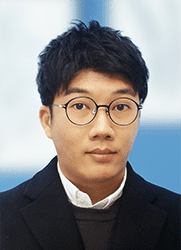
Assistant Professor
Center for Future Innovation / Division of Mechanical Engineering
When we walk along a path, do we perform hundreds of optimization calculations per second, like a robot? It is difficult to model and describe an unpredictable and unlimited environment completely, so to prepare for the approaching age of robots in the real world, we need to break away from brain-centered control strategies based only on detailed models. My research sets out to understand and implement non-computational motor intelligence in the periphery of animals, by creating new methodologies for robot body design and control in which mechanical muscles, receptors, and neural devices are embedded in the whole of the robot’s body, while the reflex system of the whole body is controlled by subtle commands from the higher brain.
The behavior and long-term performance of fractured rocks elucidated from microscopic domain <Started in 2022>

Assistant Professor
Center for Future Innovation / Division of Global Architecture
Given that Japan is blessed with the world’s third largest resources of geothermal energy, geothermal power represents a very compelling source of renewable energy. For this reason, the establishment and commercialization of technologies to promote geothermal power generation is eagerly anticipated. In one particularly promising kind of geothermal development technology, a network of fractures is artificially constructed to serve as a reservoir for fluid in hot-dry rock below the ground, with the aim of extracting geothermal energy continuously. In my research, I am trying to develop a numerical analysis technique for making accurate predictions about geothermal reservoirs, from construction conditions to long-term changes in status and performance, including the space within micro-fractures. Such a technique will enable more reliable reservoir design and construction for sustainable geothermal energy extraction. This work will lead to practical applications of reservoir construction-type geothermal development technology, to accelerate the development and diffusion of large-scale geothermal power facilities, thereby helping Japan to fully utilize its vast geothermal resources.
Development of the ultrasonics in the nm/sub-THz region <Started in 2022>
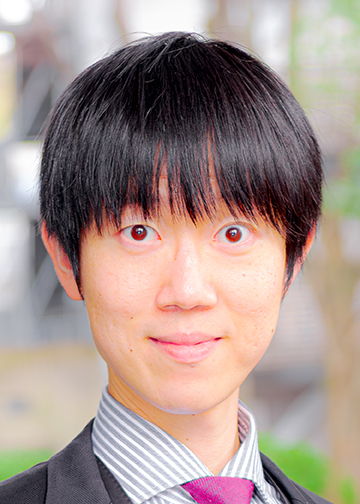
Assistant Professor
Center for Future Innovation / Research Center for Precision Engineering
I am working on the development of a measurement technique for manipulating nanometer-wavelength/sub-terahertz frequency ultrasonic waves using femtosecond pulsed lasers. Ultrasonic waves are used in technologies for evaluating physical properties, imaging, sensing, and a wide range of other scientific applications. However, due to the long wavelengths used, conventional ultrasound technologies are unsuited to nanoscale measurements. I am therefore aiming to create an “extreme ultrasound” technology that uses a femtosecond pulsed laser to manipulate ultrasonic waves with wavelengths shorter than visible light and focus them at the nanometer scale. Since this technology could be used to measure the structural/mechanical properties and morphological changes of nanometer-order semiconductors and proteins, it has the potential to contribute significantly to scientific and technological advancements in a wide variety of fields.
Biophotomechanics of organ development and the diseases <Started in 2022>

Assistant Professor
Center for Future Innovation / Division of Precision Engineering and Applied Physics
To elucidate the role of “mechanical property” in maximizing organ development, I am developing an advanced optical system that measures/controls organoids (organ-like tissues). With this system, culture methodology for organoids will be unified based on familiar physical quantity, paving the way to a future where anyone can easily culture organoids. I am also curious about mechanical homeostasis in the development of disease. I will strengthen collaborations within “TechnoArena” to create new technologies by integrating various fields such as biotechnology, photonics, and mechanics.
Singlet–triplet inversion for the next-generation of organic LED materials <Started in 2023>

Assistant Professor
Center for Future Innovation / Division of Applied Chemistry
Hund’s rule states that for a given electron configuration, the state with the maximum spin multiplicity has the lowest energy. Consequently, a triplet excited state has less energy than a singlet excited state, and the difference in these energies (ΔEST) is known to be positive. Our study focuses on the development of organic fluorescent materials with negative ΔEST, with the aim of producing high-performance organic light-emitting diodes (OLEDs) without precious metals. In addition, efforts are being made to explore the fundamental science of the emergence of negative ΔEST from a large number of electron configurations, to establish a robust theoretical framework that could potentially guide significant improvements in OLED performance.
Design and Development of New Catalytic Systems Based on 3D Aromatic Cluster Molecules <Started in 2023>
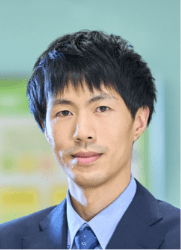
Associate Professor
Center for Future Innovation / Division of Applied Chemistry
Our lives are supported by a great variety of “organic compounds,” such as plastics, pharmaceuticals, displays, dyes, and clothing. The driving force behind this diversity is the structural diversity of organic molecules themselves. My work is focused on the “three-dimensional aromaticity” characteristics of cluster molecules with cage-like structures, and aims at the verification and practical application of a new catalyst design concept that incorporates this characteristic as a driving force of chemical reactions. By establishing a method of molecular transformation that is far more efficient and selective than conventional methods, I believe that we can facilitate substantial resource and energy savings in the chemical industry and contribute significantly to sustainable development.
Molecular-based Purification Technologies for Miscellaneous Systems <Started in 2023>
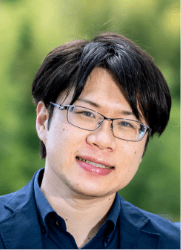
Associate Professor
Center for Future Innovation / Division of Applied Chemistry
This research focuses on the untapped industrial resource of crude hydrogen, which is a gaseous mixture of hydrogen and carbon monoxide or carbon dioxide. The goal of this research is to develop hydrogenation reactions for organic compounds that directly use crude hydrogen. Specifically, the research aims to establish an innovative technology for directly separating, storing, and transporting hydrogen from crude hydrogen gas by using heteroaromatic compounds as target compounds for hydrogenation. The new technology of [crude hydrogen → H2 storage and transport] will be verified in comparison to the current mainstream process of [crude hydrogen → high purity H2 → H2 storage and transport]. Through this work, we hope to contribute to the realization of a “hydrogen society” that efficiently and stably uses carbon resources including biomass.
Development of precisely-controlled inorganic synthesis for low-dimensional nanomaterials <Started in 2024>

Expert Leaders of Next Generation
-
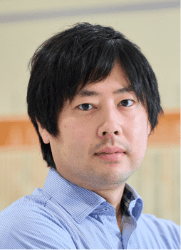
Android robotics for physical and emotional human-robot interaction
-
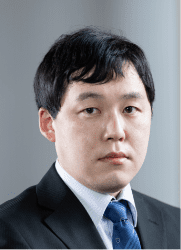
Design and Synthesis of Quantum Dot Fluorophores and Application in Luminescent Devices
-
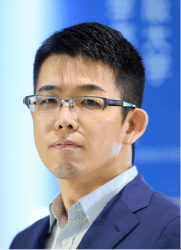
<Started in 2021>
OHISHI Yuji
Associate ProfessorDivision of Sustainable Energy and Environmental Engineering
Development of new methods for measuring thermophysical properties of high temperature liquids based on levitation techniques and evaluation of thermophysical properties of molten core materials.
-

Creation of artificial metalloenzymes and biomaterials by rational protein design based on chemical approach
-
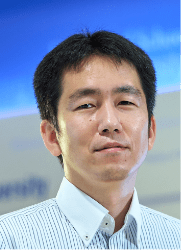
Development of a system to detect early warning signals of freshwater ecosystems based on molecular mechanisms of stress response in Daphnia
-
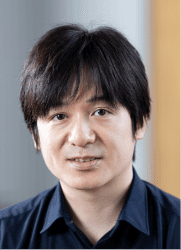
<Started in 2021>
KUWAHARA Yasutaka
Associate ProfessorDivision of Materials and Manufacturing Science
Development of innovative CO2 conversion process using plasmonic photoreaction field of oxygen deficient oxide
-
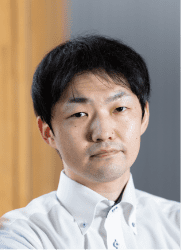
<Started in 2021>
SHIMADERA Hikari
Associate ProfessorDivision of Sustainable Energy and Environmental Engineering
Development of an accurate method for estimating air quality by integrating physical and statistical modeling approaches
-
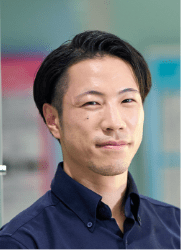
Novel manufacturing technology for high-performance cutting
-
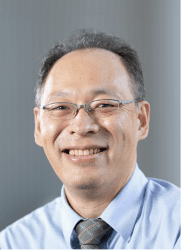
<Started in 2021>
SEINO Satoshi
Associate ProfessorDepartment of Management of Industry and Technology
Fabrication of functional nanoparticle materials using radiation
-

Development of Multiple Photo- and Electro-functional Organic Materials Utilizing Molecular Shape and Intrinsic Elemental Character
-
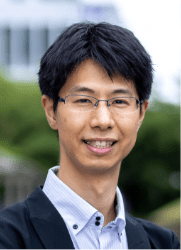
Creation of highly functional metal catalysts by controlling the properties of resource-rich typical elements
-

In-situ electron microscopy for exploring the mechanics at nanoscale
-
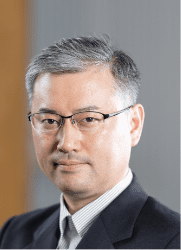
Dynamic structure-function relationship analyses of proteins/enzymes using X-ray free electron laser (XFEL)
-
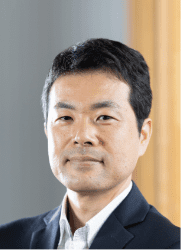
Creation of innovative nanostructured catalysts for the development of carbon-neutral hydrogen energy processes
-
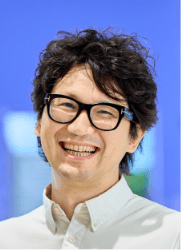
Modelling and simulation of solid-fluid multiphase flows
-

Development and application of novel optical functions of supramolecular assemblies
-

Rehabilitation and reinforcement of infrastructure structures using thermal processing technology
-

Studies on thermofluid phenomena at atomic-scale interfaces
-

<Started in 2023>
KOBAYASHI Takuma
Associate ProfessorDivision of Precision Engineering and Applied Physics
Exploration of luminescent defects in wide bandgap semiconductors and their application to quantum technologies
-

<Started in 2023>
SHINOZAKI Kenji
Associate ProfessorDepartment of Management of Industry and Technology
Development of New Functional Glasses by Controlling Nanostructure
-

Study on the fabrication of porous electrodes from slurry and application to energy devices



